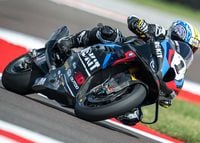Crooked Tires
** I recently changed tires on my Ducati Monster 620 and noticed the old front tire has worn at an odd angle, with more wear on the left side. Does this mean there's a problem with the tire or my bike?
_April Trestick
El Segundo CA**_
Asymmetrical wear across the front tire’s profile can occur after a lot of highway or in-town miles, due to the camber present in most roads. A typical road is constructed with a crown in the center and the lanes to either side slightly angled downward to help rainwater and debris properly drain. The camber can be a couple of degrees for a paved road and even more for gravel. Most cars have their front-end alignment offset slightly to account for this camber, so that the car tracks straight; on a bike, however, you don’t have that option, giving rise to angled tire wear. The front tire usually shows this uneven wear more prominently because you must lean and steer into the crown of the road to ride straight, exacerbating the wear on the front tire. You can see how much the road crown affects your bike by riding in the left lane of a multi-lane road or highway where the road slopes downward to the left rather than the right, opposite what you would usually encounter.
Mass Centralization
** Since I own a 2008 Honda CBR1000RR, I read Sport Rider's review of the new ZX-10R with interest and it occurred to me that the ZX might be quite similar to the CBR but with next generation chassis and engine electronics. I had suspected, incorrectly, that the two might share similar chassis specs. It turns out that the Honda's chassis, by the numbers, is "quicker" in terms of wheelbase, rake and trail. These specs don't tell the whole story, of course. So, I'm curious, how do the two compare, in terms of handling? Does the ZX share the Honda's "mass centralization" theory of chassis design?
_John Laing
Sylmar, Ca**_
_You’ve probably deduced from our various tests of both bikes that the Honda’s steering does correlate with its quicker geometry numbers compared with the Kawasaki. In terms of mass centralization, however, there are some differences. All motorcycles have been designed over the past couple of decades with an increasing importance placed on mass centralization, as it can greatly affect handling. The Honda and Kawasaki share some similar traits; for example, both have their ECUs mounted near the airbox as opposed to the more traditional spot under the seat, to move that mass closer to the center of gravity. That such a small item — weighing just a few ounces — makes a difference shows how important mass centralization is. The question is, however, to what point do you concentrate the mass? A higher CG can help a bike transition from side to side easier, but a lower CG helps stability and reduces the tendency to wheelie. In the past, the manufacturers have tended to keep CG low — most bikes need to be raised on their suspension for best performance. With the new ZX-10R and the increasing use of electronics, however, that is beginning to change. Kawasaki engineers raised the ZX-10R’s CG to take advantage of the benefits, knowing that the electronics would help avoid some of the downsides. For example, a bike with a high CG will wheelie easily, but if you have wheelie control you don’t have to worry about that aspect. It will be interesting to see how this pans out over the next few years, and how the other manufacturers take similar advantage of their electronics packages. __**SR**_
Got a question?
** **The Geek **
**831 S. Douglas St., El Segundo, CA 90245
or e-mail srmail@sorc.com
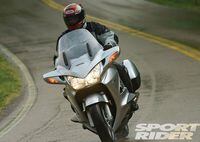
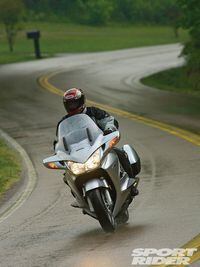
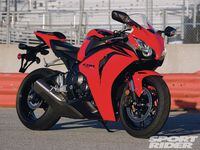
/cloudfront-us-east-1.images.arcpublishing.com/octane/DS3Q5X2VJFFAJDK2PWB3Y7K6U4.jpg)
/cloudfront-us-east-1.images.arcpublishing.com/octane/4KBL4JAMYRFDPEINTWATDUH7OM.jpg)
/cloudfront-us-east-1.images.arcpublishing.com/octane/FXADK3MVSNBRTKJ2B7TPDCCJ5Y.jpg)
/cloudfront-us-east-1.images.arcpublishing.com/octane/M7L2CPXO55FRFMECW7QGDPGP6E.jpg)
/cloudfront-us-east-1.images.arcpublishing.com/octane/T4RWGLAEHVE2VCJZOTFTNGB2KA.jpg)
/cloudfront-us-east-1.images.arcpublishing.com/octane/JM4QGLAHWNGHPM74OEB7FVBFSY.jpg)
/cloudfront-us-east-1.images.arcpublishing.com/octane/BGPNXPDDYBHD3HL6YEZQOYHXTI.jpg)
/cloudfront-us-east-1.images.arcpublishing.com/octane/SND5GGQV4RDPPMZBSBEGIZ4SIY.jpg)
/cloudfront-us-east-1.images.arcpublishing.com/octane/XUDDAPYZMZEL5EDPVDJ2DTULWI.jpg)
/cloudfront-us-east-1.images.arcpublishing.com/octane/M7AU2L6GAVCJVHW57LIRPDAAUQ.jpg)
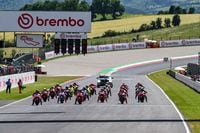
/cloudfront-us-east-1.images.arcpublishing.com/octane/JKEJY7P43JGD5C5NJO2VJQJPUM.jpg)
/cloudfront-us-east-1.images.arcpublishing.com/octane/YROKYJYUQVGPHCEMPTGBWDQCKQ.jpg)
/cloudfront-us-east-1.images.arcpublishing.com/octane/QIHEYR66TZDAPCGMWHCWCBC4XA.jpg)
/cloudfront-us-east-1.images.arcpublishing.com/octane/4FTBMNZL5BD2ZHY62XXRHJW6PI.jpg)
/cloudfront-us-east-1.images.arcpublishing.com/octane/L2BHKRCEMFDF7O3S4REZXPDH2E.jpg)
/cloudfront-us-east-1.images.arcpublishing.com/octane/QHENIV3HMJCTTCXQ6O5YPTNRZ4.jpg)
/cloudfront-us-east-1.images.arcpublishing.com/octane/K3VNQBIAKVGIHIGBRG7QKJYLVI.jpg)
/cloudfront-us-east-1.images.arcpublishing.com/octane/HRU64QXT3NH2DJOFBVI53XIKCE.jpg)
/cloudfront-us-east-1.images.arcpublishing.com/octane/4C5HHSNJCVDZXPIJTCJBVTE2MU.jpg)
/cloudfront-us-east-1.images.arcpublishing.com/octane/HBKK2TCOCZFIBIVKLKZFF5NXLQ.jpg)
/cloudfront-us-east-1.images.arcpublishing.com/octane/23S5ZEY2FBBADHQQK7AKLFDNYM.jpg)
/cloudfront-us-east-1.images.arcpublishing.com/octane/OPF3CNKKLVAN3AHQWD22DPWLEQ.jpg)
